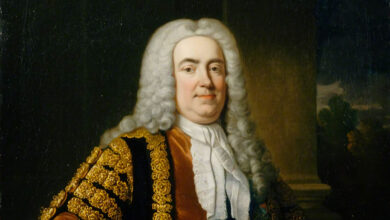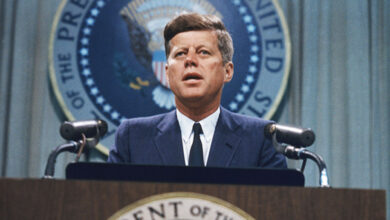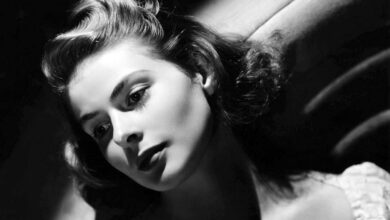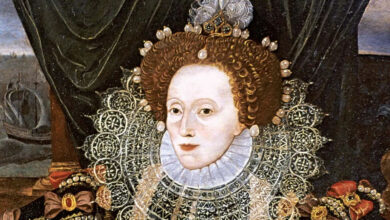Podcast: Play in new window | Download
Subscribe: Spotify | Amazon Music | Youtube Music | RSS
James Maitland Stewart was born on 20 May 1908 in Indiana, Pennsylvania, USA. His Presbyterian father, Alexander Maitland Stewart owned a hardware store and was deeply religious, raising Jimmy and his two sisters, Mary who was born in 1912 and Virginia who was born in 1914 as avid churchgoers, and Jimmy remained so for most of his life. As well as church, music was also important in the Stewart household. Jimmy’s mother, Elizabeth was a pianist and Jimmy learned to play the accordion after a customer in his father’s hardware store bartered it as he couldn’t afford to pay his bill.
Jimmy’s real early passion though was aviation and he dreamed of one day being able to fly. He would spend time in the basement making model aeroplanes, studying chemistry, and drawing mechanical diagrams. However, although he was intelligent, he didn’t perform well at school as he tended to daydream.
It had always been his father’s intention that Jimmy would attend Princeton University as was the family tradition and then one day take over the family business, but it was clear that he wouldn’t be accepted if he continued to attend public high school. So, during the latter part of 1923, Jimmy Stewart attended the Mercersburg Prep School where he made his first on-stage appearance in 1928 in a play called The Wolves.
Although he still dreamed of flying, especially after seeing Charles Lindbergh cross the Atlantic Ocean in 1927, he reluctantly concluded that he may never realise his dream as his father was still quite strongly steering him towards Princeton.
Jimmy Stewart enrolled at Princeton University in 1928. He graduated in 1932 with a degree in architecture and was awarded a scholarship for graduate studies in architecture, but Stewart had by now started to become attracted to the theatre and chose instead to join University Players which put on various performances in West Falmouth, Massachusetts. Whilst there he met and became close friends with Henry Fonda and Margaret Sullavan. Stewart, Fonda and two other friends from the Players moved to New York and Jimmy Stewart debuted on Broadway in Carry Nation and then in Goodbye Again. He appeared in several more plays and although he received critical acclaim, the plays didn’t, and their short runs led him to start thinking about going back to his studies.
Unknown to Jimmy Stewart at the time though, was a man called Bill Grady who had been tracking Stewart’s career since first seeing him perform at Princeton. As it turned out Bill Grady was a talent scout, and he was instrumental in Jimmy Stewart signing a seven-year contract with MGM in 1934.
Stewart’s first role was a minor one in a Spencer Tracy film called The Murder Man in 1935. And minor roles was all Stewart seemed to get from MGM during his first few years with them as MGM didn’t see Jimmy Stewart as leading man material, preferring instead to loan him out to other studios. This resulted in two films that thrust Stewart into the limelight as whilst he was on loan to Columbia, he appeared in two Frank Capra films, You Can’t Take it With You in 1938 and Mr Smith Goes to Washington in 1939 for which Jimmy Stewart received his first Academy Award nomination. In 1940 he won the Academy Award for Best Actor for his part in The Philadelphia Story opposite Katharine Hepburn.
In March 1940, Jimmy Stewart became one of Hollywood’s first stars to enlist when it looked certain that the United States would enter the Second World War. By this time, Stewart had achieved his dream of becoming a pilot. He was assigned to the Army Air Corps and was commissioned as a second lieutenant on 1 January 1942. After spending a year training new pilots in New Mexico, he deployed to England and flew B-24 Liberator bombers and was awarded the Distinguished Flying Cross, reaching the rank of Colonel before returning to civilian life in 1945. After returning to the United States, Stewart successfully transferred his pilot skills from the B-24 to the B-47 and then the B-52. Stewart was ultimately promoted to the rank of brigadier general on 23 July 1959. He didn’t step down from the Air Force until 31 May 1968 when he had reached the mandatory retirement age of 60.
After the war, he starred in another Frank Capra film when he took the role of George Bailey in 1946’s It’s a Wonderful Life. This film would end up being one of his most loved and it also earned him his third Academy Award nomination.
As he entered his 40s Jimmy Stewart started to play other types of roles and was helped in his endeavour to find parts that toughened him up in the eyes of both the public and the studios through collaborations with Alfred Hitchcock and Anthony Mann. The Alfred Hitchcock movies he starred in were Rope in 1948, Rear Window in 1954, The Man Who Knew Too Much in 1956, and Vertigo in 1958.
Six out of a total of eight Anthony Mann films that Jimmy Stewart starred in were Westerns, including The Man from Laramie in 1955 but he also played the title role in the 1954 biopic The Glenn Miller Story.
He had some success on Broadway in the late 1940s, a highlight of which is probably when he played the part of the intoxicated Elwood P. Dowd who had an invisible best friend called Harvey who just happened to be a six-foot tall rabbit. This role became one of Jimmy Stewart signature ones, especially after the part was adapted for a 1950 movie which earned Stewart another Academy Award nomination.
Up until now, Jimmy Stewart had remained a bachelor. The true love of his life had been Margaret Sullavan, but she said that she never felt the same way about her University Players colleague and so they were never more than good friends. His romantic interests included Ginger Rogers, Loretta Young, Olivia de Havilland and Marlene Dietrich, and he even nearly got married once in Las Vegas in 1943 to Dinah Shore, but he got cold feet and called it off. However, after Gary Cooper and his wife invited him to a dinner party, he started dating one of their other guests, Gloria Hatrick. She was divorced with two children, and they were married on 9 August 1949. Stewart adopted her two sons, Ronald and Michael and the couple had twin daughters called Judy and Kelly who were born on 7 May 1951. The couple remained together until Gloria’s death from lung cancer in 1994.
As the 1950s turned into the 1960s, Stewart continued to make quality films including The Spirit of St. Louis in 1957, in which he played his childhood hero Charles Lindbergh, Anatomy of a Murder in 1959 for which he received another Academy Award nomination, The Man Who Shot Liberty Valance in 1962 and The Flight of the Phoenix in 1965.
Parts started to dry up in the 1970s and so he tried his hand at television, in two short-lived series, The Jimmy Stewart Show which ran during 1971 and 1972 and Hawkins during 1973 and 1974 and he was also a popular guest on talk shows. He also made a few commercials for the Boy Scouts of America, of which he was a keen supporter and is one of many philanthropic interests that Jimmy Stewart had. He was also a staunch Republican and in 1976 he actively supported Ronald Reagan’s bid for the Republican presidential nomination, attending campaign rallies and making speeches.
Towards the end of his career, Jimmy Stewart received several honorary awards including an honorary Academy Award in 1985. In the same year, he also received the Presidential Medal of Freedom from the now President of the United States, Ronald Regan.
After his wife Gloria’s death in 1994, Jimmy Stewart became somewhat of a recluse, as he found himself a little lost without her, spending most of his time in his bedroom. He had a fall in 1995 and was hospitalised and although it was recommended that he have the battery changed in his pacemaker the following year, he decided against it.
In February 1997, he was hospitalised again, this time with an irregular heartbeat. On 25 June a thrombosis in his right leg led to a pulmonary embolism a week later, and he died of a heart attack on 2 July 1997 at his Beverly Hills home. He was 89 years old. At his service, he received full military honours and was buried at Forest Lawn Memorial Park in Glendale, California, with over 3000 mourners in attendance.
Podcast: Play in new window | Download
Subscribe: Spotify | Amazon Music | Youtube Music | RSS




